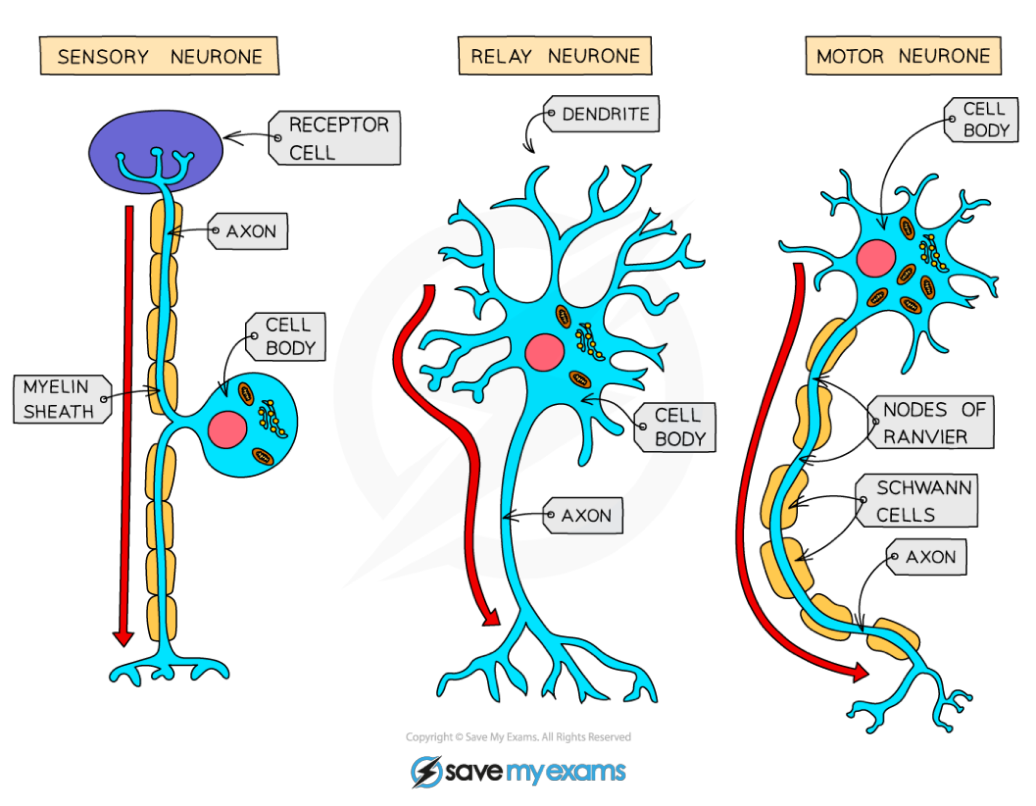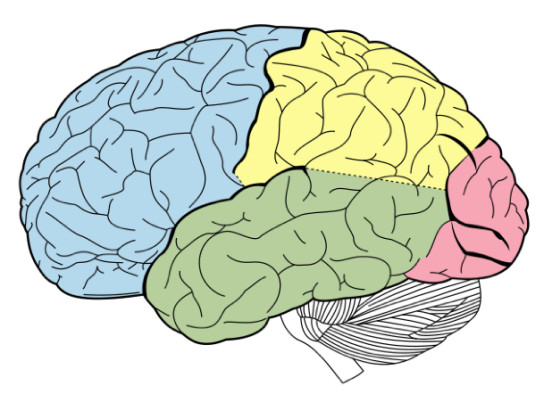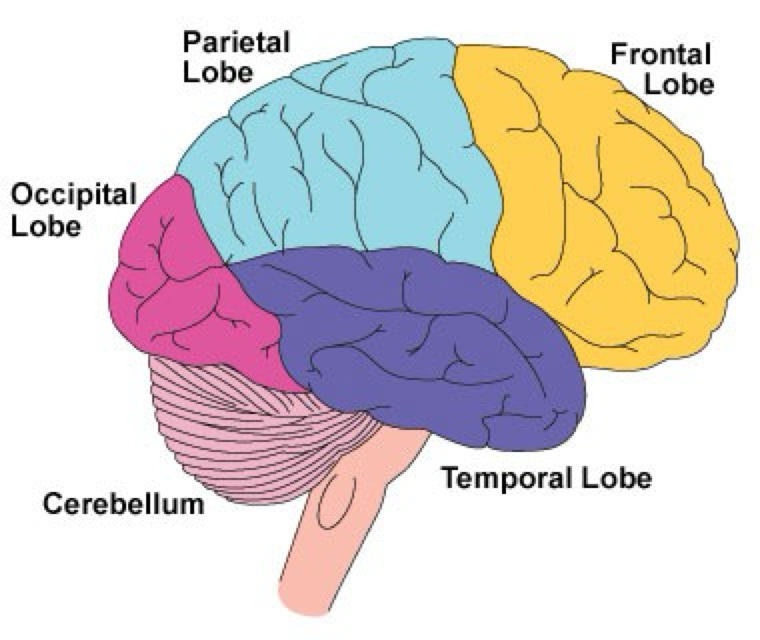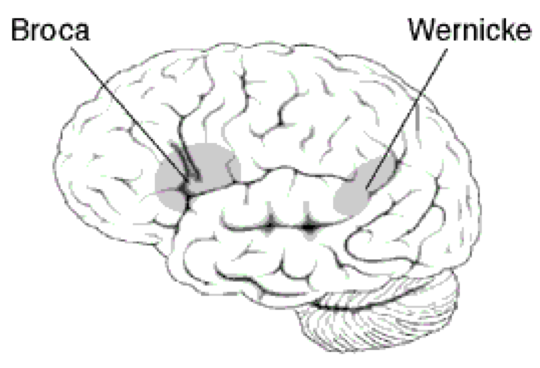The Brain and Biological Systems
1/57
There's no tags or description
Looks like no tags are added yet.
Name | Mastery | Learn | Test | Matching | Spaced |
|---|
No study sessions yet.
58 Terms
What is the primary assumption of biopsychologists regarding behavior and experience?
They assume behavior and experience are caused by activity in the nervous system.
What are the main functions of the nervous system?
1. Collect, process, and respond to information from the environment and body.
2. Coordinate the working of different organs and cells.
What are the two main divisions of the human nervous system?
Central Nervous System (CNS)
Peripheral Nervous System (PNS)
What components make up the Central Nervous System (CNS)?
1. Brain
2. Spinal cord
What is the role of the Peripheral Nervous System (PNS)?
It connects the CNS to the rest of the body and the environment, facilitating communication.
How do the CNS and PNS work together?
They collect information from inside the body and the environment, process it, and initiate appropriate responses.
What is the Autonomic Nervous System (ANS) and its primary function?
The ANS is a part of the peripheral nervous system that controls involuntary bodily functions like heart rate, breathing, and digestion.
How is the Autonomic Nervous System divided, and what are the primary functions of each division?
The ANS is divided into:
1. Sympathetic Nervous System: Prepares the body for ‘fight or flight’ responses.
2. Parasympathetic Nervous System: Promotes ‘rest and digest’ functions, calming the body after stress.
What are the effects of the Sympathetic and Parasympathetic Nervous Systems on the heart?
The Sympathetic Nervous System increases heart rate, while the Parasympathetic Nervous System decreases it.
How do the Sympathetic and Parasympathetic Nervous Systems affect digestion?
The Sympathetic Nervous System slows digestion, whereas the Parasympathetic Nervous System increases it.
What role does the amygdala play in emotional responses?
The amygdala processes emotions like fear and aggression and initiates appropriate responses to stimuli.
How does the amygdala contribute to the ‘fight or flight’ response?
Upon detecting a threat, the amygdala activates the hypothalamus, which then stimulates the Sympathetic Nervous System to prepare the body for action.
The Nervous System
Divisions: Central Nervous System (CNS) and Peripheral Nervous System (PNS).
• Functions:
• Collect, process, and respond to environmental and bodily information.
• Coordinate the working of different organs and cells.
Central Nervous System (CNS)
Components: Brain and spinal cord.
• Role: Processes information and coordinates responses.
Peripheral Nervous System (PNS)
Function: Transmits signals between the CNS and the rest of the body.
• Subdivisions:
• Autonomic Nervous System (ANS): Controls involuntary functions (e.g., heart rate, digestion).
• Somatic Nervous System: Manages voluntary movements and sensory information.
Autonomic Nervous System (ANS)
Divisions:
• Sympathetic Nervous System: Prepares the body for ‘fight or flight’ responses.
• Parasympathetic Nervous System: Promotes ‘rest and digest’ activities.
Sympathetic vs. Parasympathetic Effects
Heart:
• Sympathetic: Increases heart rate.
• Parasympathetic: Decreases heart rate.
• Lungs:
• Sympathetic: Dilates bronchi.
• Parasympathetic: Constricts bronchi.
• Digestive System:
• Sympathetic: Slows digestion.
• Parasympathetic: Increases digestion.
The Endocrine System
Function: Glands secrete hormones into the bloodstream to regulate bodily functions.
• Key Glands and Hormones:
• Pituitary Gland: ‘Master gland’; influences other glands.
• Thyroid Gland: Produces thyroxine; regulates metabolism.
• Adrenal Glands: Release adrenaline; manage stress responses.
• Testes: Produce testosterone; influence male characteristics.
• Ovaries: Produce oestrogen; influence female characteristics.
Hormones vs. Nervous System
• Speed:
• Nervous System: Fast responses (e.g., reflexes).
• Endocrine System: Slower, prolonged effects (e.g., growth, metabolism).
Interaction Between Systems
The ANS and endocrine system collaborate during stress responses; e.g., the hypothalamus activates the sympathetic nervous system and stimulates adrenal glands to release adrenaline.

Neuron Structure
Cell Body: Contains the nucleus; controls cell activities.
• Dendrites: Receive signals from other neurons.
• Axon: Transmits electrical impulses away from the cell body.
• Myelin Sheath: Insulates the axon; speeds up signal transmission.
• Axon Terminals: Release neurotransmitters to communicate with other neurons.
Types of Neurons
Sensory Neurons: Carry information from sensory receptors to the CNS.
• Relay Neurons: Connect sensory and motor neurons within the CNS.
• Motor Neurons: Transmit signals from the CNS to muscles or glands.
Synaptic Transmission
Process: Electrical impulse travels down the axon → triggers release of neurotransmitters → cross the synaptic gap → bind to receptors on the next neuron → may initiate a new impulse.
The ‘Fight or Flight’ Response
Trigger: Threat detected → Amygdala activates → Hypothalamus signals the Sympathetic Nervous System.
• Response: Adrenaline released → increases heart rate, dilates pupils, inhibits digestion → prepares body to confront or flee threat.
What is the sequence of events in a reflex arc?
Stimulus
2. Receptor
3. Sensory neuron
4. Relay neuron
5. Motor neuron
6. Effector (muscle or gland)
7. Response
What are the main components of a neuron?
Cell body (with nucleus)
• Dendrites
• Axon
• Myelin sheath
• Axon terminals
What are the three main types of neurons and their functions?
Sensory neurons: Transmit information from receptors to the CNS.
• Relay neurons: Connect sensory and motor neurons within the CNS.
• Motor neurons: Transmit information from the CNS to effectors like muscles and glands.
How does synaptic transmission occur between neurons?
An action potential reaches the presynaptic neuron’s axon terminal.
2. Neurotransmitters are released into the synaptic cleft.
3. Neurotransmitters bind to receptors on the postsynaptic neuron.
4. If the threshold is reached, a new action potential is generated in the postsynaptic neuron.
5. Neurotransmitters are removed from the synapse through reuptake or enzymatic breakdown.
What is the difference between excitatory and inhibitory neurotransmitters?
Excitatory neurotransmitters (e.g., dopamine) increase the likelihood of an action potential in the postsynaptic neuron.
• Inhibitory neurotransmitters (e.g., GABA) decrease this likelihood.
What is the primary function of the endocrine system?
To secrete hormones into the bloodstream, regulating various bodily functions.
What are some major endocrine glands and the hormones they produce?
Pituitary gland: ADH, oxytocin, human growth hormone
• Thyroid gland: Thyroxine
• Testes: Testosterone (and small amounts of oestrogen)
• Ovaries: Oestrogen (and small amounts of testosterone)

Label this brain

Where is the Broca’s and Wernicke’s area and what is the function?
Broca’s area is responsible for converting thought into fluent speech.
Wernicke’s area is responsible for language comprehension and producing language which makes sense.

What is the difference between the holistic theory and the localisation theory of brain function?
Holistic theory (pre-19th century) suggested all brain parts are involved in thought/action (equipotentiality). Localisation theory (Broca & Wernicke) proposes specific functions are located in specific brain areas.
What does Broca’s area do and what happens if it’s damaged?
Found in the left frontal lobe; it converts thoughts into meaningful speech. Damage causes Broca’s aphasia—slow, effortful, and non-fluent speech.
What is the function of Wernicke’s area and what are the symptoms of damage?
Located in the left temporal lobe; responsible for language comprehension. Damage causes Wernicke’s aphasia—fluent but meaningless speech, anomia, neologisms, and impaired understanding.
How are the left and right brain hemispheres different in terms of language?
Language functions (Broca’s and Wernicke’s areas) are typically localised to the left hemisphere. The right hemisphere usually cannot take over language functions if the left is damaged.
What are the three main layers of the human brain (from inner to outer)?
1. Central core (brain stem)
2. Limbic system
3. Cerebrum
What functions are controlled by the central core of the brain?
Regulates involuntary behaviours like breathing, swallowing, and sleep-wake cycles. Includes midbrain, pons, and medulla oblongata.
What is the role of the limbic system and which key structure is involved in emotion?
Controls emotions, motivation, learning, and memory. Includes the amygdala (fear and rage) and hippocampus (memory).
What are the functions of the cerebrum?
Responsible for higher cognitive functions—movement, senses, memory, emotion. Divided into two hemispheres connected by the corpus callosum.
What is the cerebral cortex and how is it organised?
Outer layer of the cerebrum, involved in processing sensory info. Divided into 4 lobes:
• Frontal: movement, thinking
• Parietal: sensory info
• Temporal: auditory & language
• Occipital: vision
What happened to Phineas Gage and what did it reveal about the brain?
A metal rod damaged Gage’s left frontal lobe. He survived but had drastic personality changes. This provided early evidence that the frontal lobe is involved in personality and social behaviour.
What did Peterson et al.’s PET scan studies reveal about localisation of function?
Wernicke’s area was active during listening, and Broca’s during reading. Later research showed semantic and episodic memories are stored in different areas of the prefrontal cortex.
What is meant by ‘neuroplasticity’?
The brain’s ability to adapt structurally and functionally due to learning, experience, or injury. This includes increased grey matter and synaptic changes.
What did Maguire et al. (2000) find in London taxi drivers?
They had increased grey matter in the posterior hippocampus, showing spatial navigation experience can lead to structural brain changes.
What did Draganski et al. (2004) discover about learning to juggle?
Learning to juggle increased grey matter in the mid-temporal cortex. When juggling stopped, the grey matter decreased, showing plasticity and synaptic pruning.
What brain changes were found in people practicing mindfulness?
Increased grey matter in the prefrontal cortex and decreased grey matter in the amygdala, correlating with reduced stress and anxiety.
What is meant by ‘functional recovery’ in the brain?
The brain’s ability to regain lost functions (e.g. speech or mobility) using undamaged areas after trauma. Often more effective in younger people.
What did Danelli et al. (2013) find in the case of E.B.?
After losing his left hemisphere (incl. language areas) at age 2, E.B. regained language function via the right hemisphere. Shows functional plasticity is stronger in early childhood.
Name three mechanisms involved in functional recovery.
1. Axonal sprouting – growth of new axons
2. Denervation supersensitivity – heightened sensitivity of surviving neurons
3. Recruitment of homologous areas – using the same area in the opposite hemisphere
Give one strength of research into neuroplasticity.
Supported by robust empirical evidence (e.g. Maguire, Draganski). Practical applications in therapy and rehabilitation.
Give one limitation of research into neuroplasticity.
Not universal – e.g. H.M. never recovered memory after hippocampus removal. Also mostly correlational, making cause-effect hard to prove.
What was the aim of Sperry’s split-brain study?
To investigate lateralisation of brain function by studying how split-brain patients process information when the corpus callosum is severed.
What did Sperry’s research reveal about hemispheric functions?
Left hemisphere (LH): Language, logic
• Right hemisphere (RH): Facial recognition, insight, spatial skills
• Info shown to RH couldn’t be spoken but could be drawn or selected
Which hemisphere controls which of the following:
• Language
• Facial recognition
• Logic
• Insight
• Spatial skills
• Language – Left
• Facial recognition – Right
• Logic – Left
• Insight – Right
• Spatial skills – Right
How does neurosurgery provide evidence for localisation of function?
Lobotomies and leucotomies (e.g. Dougherty et al. 2002 treating OCD) suggest specific behaviours and symptoms are localised to certain brain areas.